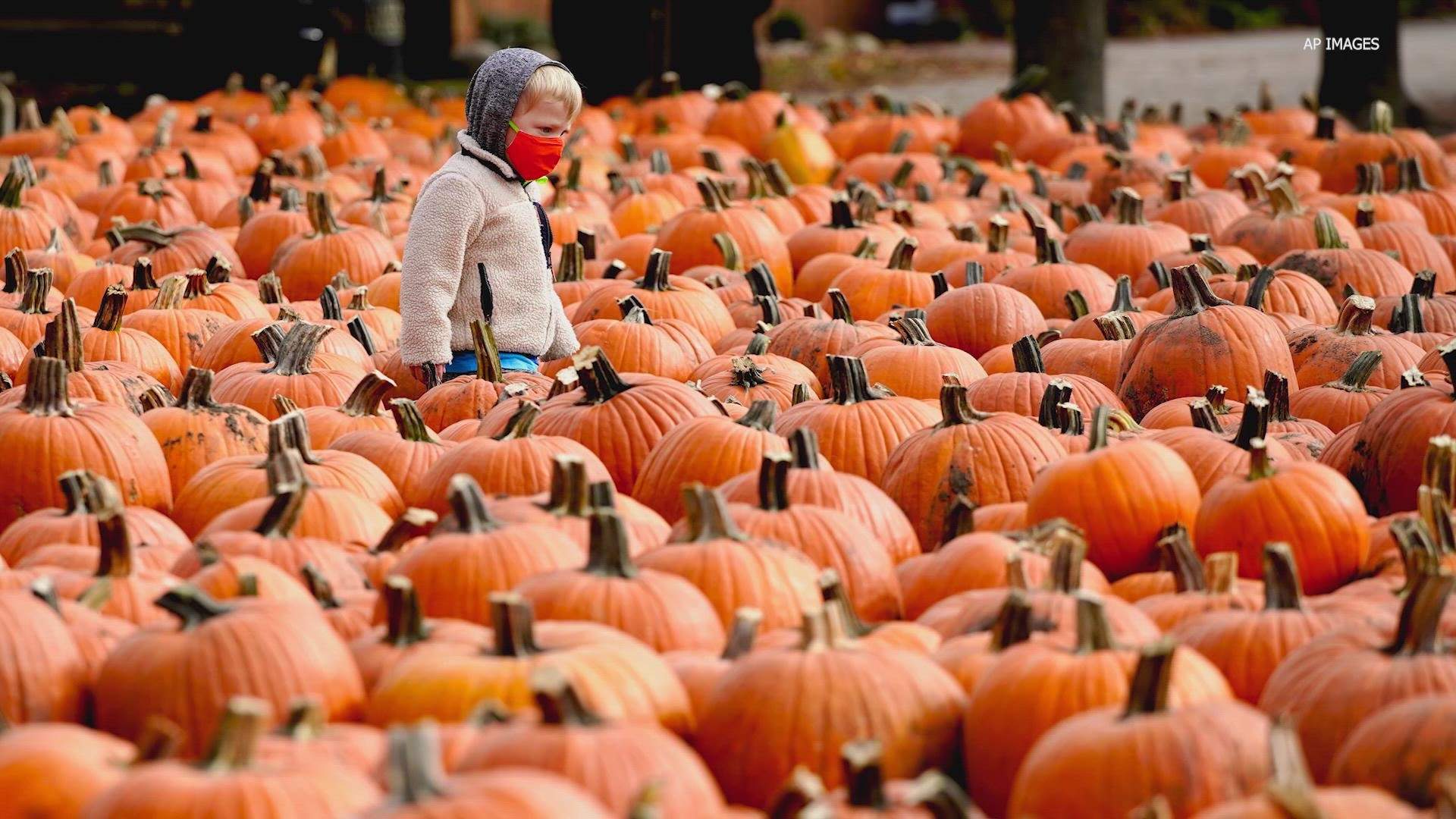October is peak pumpkin-buying season as people seek out the autumn gourd to place by their front doors or turn into treats. But pumpkin season is fleeting, and most households toss out their pumpkins soon after Halloween.
That’s why one person began the month with a PSA posted on Instagram that’s been liked more than 150,000 times, in which people were urged to break up the pumpkins they plan to discard to feed to wildlife instead of throwing them out.
THE QUESTION
Is it safe for wildlife to eat discarded pumpkins?
THE SOURCES
- David Mizejewski, a naturalist with National Wildlife Federation
- Kristin Denryter, chair of the Nutritional Ecology Working Group at The Wildlife Society
- National Wildlife Federation (NWF)
- Georgia Department of Natural Resources
THE ANSWER
Yes, it’s generally safe for wildlife to eat discarded pumpkins and in fact, many zoos and shelters take pumpkin donations for their animals. However, animals shouldn’t eat pumpkins that you wouldn’t eat yourself.
But composting is the best way to discard your pumpkins.
WHAT WE FOUND
Pumpkins are generally safe for animals to eat, according to Rau Animal Hospital. They contain nutrients like vitamins A, B, C and E, fiber and their seeds are packed full of protein. They do not contain anything inherently harmful to animals or people.
David Mizejewski, a naturalist with the National Wildlife Federation, said that it’s generally not a good idea to feed wildlife because if animals depend more on humans for food, they can develop nutritional deficiencies and can become too comfortable around people and endanger themselves as a result, what’s called habituation. But in this case, leaving out pumpkins for them to eat shouldn’t be a problem.
“It's a once a year kind of thing, so it's not really going to habituate them,” Mizejewski said. “It's a nice snack — I know pumpkin is generally nutritious. So I'm not too worried about that in that scenario, and I think that's something that's okay to do.”
The Georgia Department of Natural Resources recommends placing small pumpkins around the yard for animals like raccoons to eat. It says you can cut up larger pumpkins into pieces you place in more secluded areas of the yard for butterflies and other insects to eat the plant juices.
Many zoos and other places that rehabilitate wildlife take pumpkin donations for their animals, although Mizejewski recommends checking your local zoo’s website or calling them first to make sure they’re accepting pumpkins and to find out if they have any rules on what kinds of pumpkins they accept. He says they often use pumpkins as both food and toys for animals, and even big cats like lions will take the opportunity to play with a big, round pumpkin.
“For animals that live under human care and zoos, one of the most important things is enrichment,” Mizejewski said. “Since they're not out in nature getting to run around, good animal care incorporates enrichment and that means giving the animals interesting new things — novel things that they can eat or play with or explore. And I know a lot of zoological facilities do utilize pumpkins.”
And it’s not just the fleshy part of the pumpkin animals find appealing, pumpkin seeds are popular with squirrels and birds, as well. Mizejewski explained you can get mileage out of both the seeds and shell of the pumpkin at once with creative craft projects that turn it into a bird feeder.
They can even continue to feed some species long past this autumn. Mizejewski said, if you have a big enough garden, you could plant your pumpkin seeds the following spring. Pumpkins are a plant native to North America and they help native pollinators like squash bees. A local agricultural expert can help you find out if your soil is right for pumpkins.
So why should I compost my pumpkin instead?
Feeding your local wildlife isn’t the only way you can reuse your pumpkins. In fact, the experts agreed that there are better ways to reuse them when you’re ready to discard them.
“I would compost that [pumpkin] before I would chop it up and offer it to the wildlife,” Mizejewski said.
That’s because pumpkins decompose quickly and begin to break down as soon as you cut into them, according to a 2014 article Mizejewski wrote.
But not all pumpkins are safe. You shouldn’t feed wildlife rotting pumpkins or pumpkins that have wax drippings from candles, glitter paint, bleach or hair spray.
“If you wouldn't eat it, then don't offer it to animals,” Mizejewski said. “That's the simplest way of doing it.”
Rot and inedible decorations contribute to why Kristin Denryter, chair of the Nutritional Ecology Working Group at The Wildlife Society, cautions against feeding animals pumpkins. Like Mizejewski, she is concerned about wildlife becoming habituated and said intentionally feeding wildlife in some jurisdictions is actually against the law. She added that animals you may not want close to your home are just as likely to come for the pumpkins as the animals you’re trying to feed.
“What can happen in a lot of places is you're also going to draw in animals that you might not want to have around,” Denryter said. “Things like raccoons that can really cause a lot of trouble, and bears which can be especially dangerous for people.”
Denryter, like Mizejewski, recommended checking with zoos and shelters to see if they take pumpkin donations. And she is also a proponent of composting.
“I definitely recommend composting if you can,” Denryter said. “And if you can't compost, so many people are doing it these days, you probably have a friend who does or there may be a community garden that would really like to take advantage of your pumpkin for compost.”
More from VERIFY: Rising sea levels

